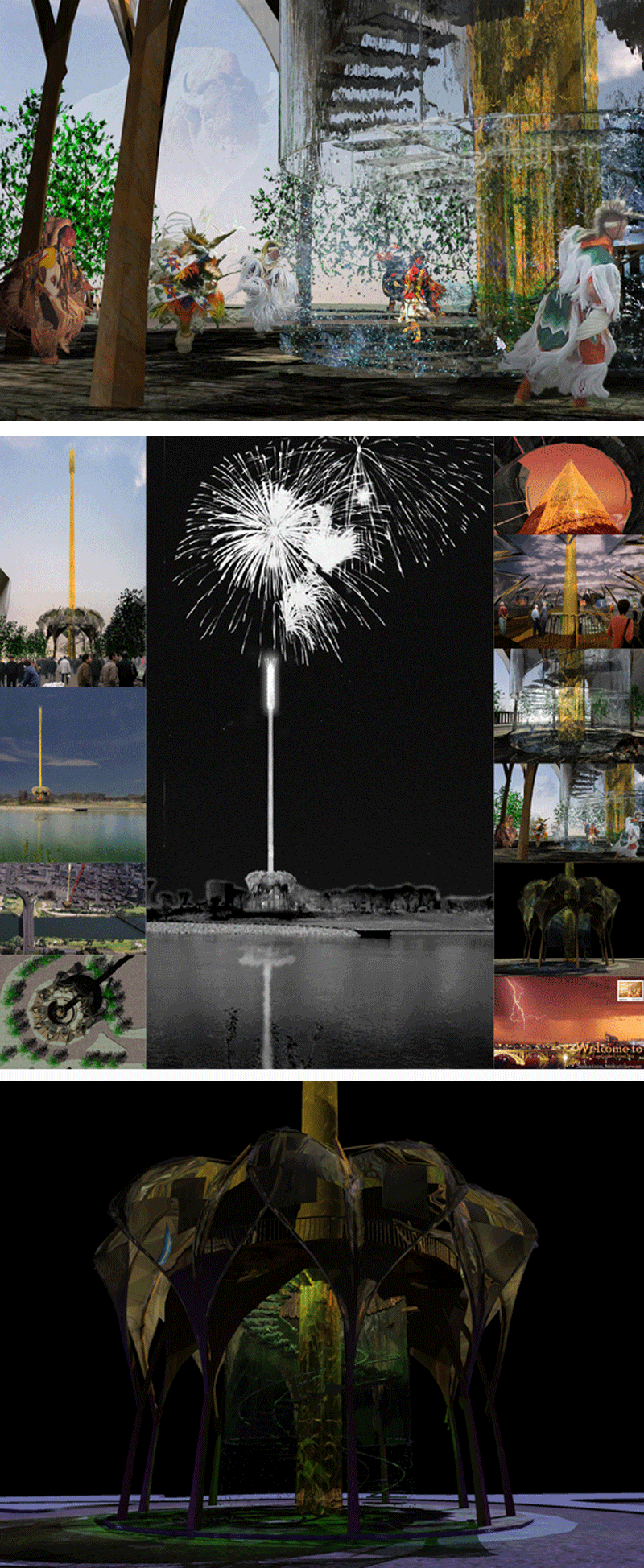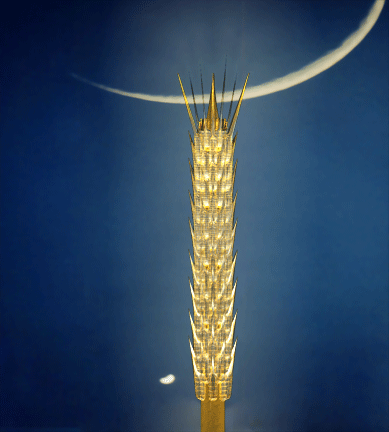 |
 GENERAL
DESIGN APPROACH FOR THE CENTURY PLAZA LANDMARK, CITY OF
SASKATOON GENERAL
DESIGN APPROACH FOR THE CENTURY PLAZA LANDMARK, CITY OF
SASKATOONOur design approach is centered on a continual discourse between appropriate ideas and physical possibilities. IDEA ONE: THE SIGNIFICANCE OF WHEAT IN THE PRAIRIES Two key developments a century ago unleashed Canada’s economic potential. One was the Marquis strain of wheat and the other was the transmission of hydro electric power over long distances. These achievements were the basis for the enormous, pre-First World War growth of Canada. Charles E. Saunders succeeded in creating a grain that ripened a critical seven to ten days earlier than other varieties and could be harvested before the first frost. Widely distributed to farmers in 1909, his Marquis strain was the seed of choice by 1920 for nine out of ten fields of prairie wheat. Saunders’ achievement turned Canada into a force in the world grain farming along with Russia, the U.S. and Argentina. Marquis was heralded as the best hard spring wheat in North America and led to a major western migration. IDEA TWO: AIM HIGH IN HOPE AND WORK Architect and City Planner, Daniel H. Burnham, with respect to his plans for the City of Chicago made the following statement: "Make no little plans; they have not magic to stir men's blood . . . Make big plans; aim high in hope and work . . ." SYNTHESIS These two ideas led to the notion of a significant marker celebrating the exuberance of past achievements and future possibilities. The Saskatoon Spire would bring pride to its citizens and initiate the urban development necessary for its growth and development. IDEA THREE: PARTICIPATION / ANIMATION The wind could cause it to sway. By drawing lightning it could animate the urban sky. The presence of water would humanize the plaza. Light and sound would energize the place and its events. People’s formal and informal presence would bring it alive. Diurnal and nocturnal uses would adapt to seasonal requirements. It could be a place that nurtures both the intentional and the accidental. It could nurture pride in the City. It could provide urban identity. It could involve design innovation in the making of a powerful marker. It would require the passionate participation of every citizen of Saskatchewan to realize its creation. next page Architect's Workshop: Ovidio Sbrissa, Frank C. Carter, Jordan Ellis, Dinko Sakanovic, Soodei Ssalehin, |